In this post, we will cover how to install Kubernetes cluster on Ubuntu 20.04 step-by-step. By the end of this post, you will have a functional Kubernetes environment that can run and manage your containerized applications seamlessly.
Kubernetes, often abbreviated as K8s, is a powerful container orchestration tool that automates the deployment, scaling, and management of containerized applications. With its widespread adoption, Kubernetes has become an essential tool for modern DevOps teams and developers.
Prerequisites
Before diving into the installation process, ensure that you have the following prerequisites:
- Ubuntu 20.04 : Make sure you have a clean, up-to-date installation of Ubuntu 20.04 on all the machines you intend to include in your cluster.
- Minimum Resources: Each machine should have at least 2 CPU cores, 2GB of RAM, and enough disk space to accommodate the Kubernetes components.
- Static IP Addresses: Assign static IP address to each node in the cluster to ensure stability and consistency.
- SSH Access: Ensure you have SSH access to all the nodes from the machine you will be using to install the cluster.
- Privileged user with sudo rights
- Stable Internet Connection
Lab setup:
- Machine 1 – K8s-master – 192.168.1.40
- Machine 2 – K8s-node-0 – 192.168.1.41
- Machine 3 – K8s-node-1 – 192.168.1.42
Without any further delay, let’s jump into the Kubernetes cluster installation on Ubuntu 20.04.
1) Set hostname of Each Node
Use hostnamectl command to set hostname on each node, example is shown below:
$ sudo hostnamectl set-hostname "k8s-master" // Run this command on master node $ sudo hostnamectl set-hostname "k8s-node-0" // Run this command on node-0 $ sudo hostnamectl set-hostname "k8s-node-1" // Run this command on node-1
Add the following entries in /etc/hosts files on each node,
192.168.1.40 k8s-master 192.168.1.41 k8s-node-0 192.168.1.42 k8s-node-1
2) Disable swap and Add Kernel Modules
Disable swap and add following kernel module on all the nodes ( master + worker nodes).
To disable swap, edit /etc/fstab file and comment out the line which includes entry either swap partition or swap file.
$ sudo vi /etc/fstab

Save & exit the file
Run swapoff command to disable the swap on the fly
$ sudo swapoff -a
Next, add kernel modules and enable IP forwarding,
$ sudo tee /etc/modules-load.d/containerd.conf <<EOF overlay br_netfilter EOF $ sudo modprobe overlay $ sudo modprobe br_netfilter $ sudo tee /etc/sysctl.d/kubernetes.conf<<EOF net.bridge.bridge-nf-call-ip6tables = 1 net.bridge.bridge-nf-call-iptables = 1 net.ipv4.ip_forward = 1 EOF $ sudo sysctl --system
3) Install Containerd Runtime on All Nodes
Install containerd runtime on all the nodes, run following set of commands,
Run Following apt command to install required dependencies for continaerd
$ sudo apt install -y curl gnupg2 software-properties-common apt-transport-https ca-certificates
Next, add docker repository,
$ sudo curl -fsSL https://download.docker.com/linux/ubuntu/gpg | sudo gpg --dearmour -o /etc/apt/trusted.gpg.d/docker.gpg $ sudo add-apt-repository "deb [arch=amd64] https://download.docker.com/linux/ubuntu $(lsb_release -cs) stable"
After adding repo, install containerd using beneath commands,
$ sudo apt update $ sudo apt install -y containerd.io
Configure the contianerd using following command,
$ containerd config default | sudo tee /etc/containerd/config.toml >/dev/null 2>&1 $ sudo sed -i 's/SystemdCgroup \= false/SystemdCgroup \= true/g' /etc/containerd/config.toml
Start and enable containerd service
$ sudo systemctl restart containerd && sudo systemctl enable containerd
Verify containerd service, run
$ sudo systemctl status containerd
4) Install Kubectl, kubelet and kubeadm on all nodes
Execute beneath commands on all 3 nodes to add Kubernetes repository and then install kubectl , kubelet and kubeadm utility
$ sudo apt install -y apt-transport-https curl $ curl -s https://packages.cloud.google.com/apt/doc/apt-key.gpg | sudo gpg --dearmour -o /etc/apt/trusted.gpg.d/kubernetes-xenial.gpg $ sudo apt-add-repository "deb http://apt.kubernetes.io/ kubernetes-xenial main" $ sudo apt update $ sudo apt install -y kubelet kubeadm kubectl
Note : At time of writing this article , Ubuntu 16.04 (Xenial Xerus ) Kubernetes repository was available but in future, when the kubernetes repository is available for Ubuntu 20.04 then replace xenial with focal word in above ‘apt-add-repository’ command.
5) Install Kubernetes Cluster using kubeadm
Login to your master node (k8s-master) and run below ‘kubeadm init‘ command to initialize Kubernetes cluster,
$ sudo kubeadm init --control-plane-endpoint=k8s-master
Once the cluster is initialized successfully, we will get the following output
After the initialization process completes, you’ll see a message containing a ‘kubeadm join’ command. Save this command; we’ll use it later to add worker nodes to the cluster.
In order to interact with cluster as a regular user, let’s execute the following commands, these commands are already there in output just copy paste them.
$ mkdir -p $HOME/.kube $ sudo cp -i /etc/kubernetes/admin.conf $HOME/.kube/config $ sudo chown $(id -u):$(id -g) $HOME/.kube/config
6) Add Worker Nodes to Kubernetes Cluster
If you want to add worker nodes to your Kubernetes cluster, log in to each worker node and run the ‘kubeadm join’ command you saved from Step 5.
Copy “kubeadm join” command and paste it on both nodes (worker nodes).
$ sudo kubeadm join k8s-master:6443 --token zpjp2j.c0l59zbh4yw9dwfz \ --discovery-token-ca-cert-hash sha256:523b10a16d5d283f45dad330d7b8ede5b628f0e070278c03ead80683fa1b6061
Now, verify the nodes status from the master node, run “kubectl get nodes” c
$ kubectl get nodes
As we can see both worker nodes and master node have joined the cluster, but status of each node is “NotReady”. To make the status “Ready” we must deploy Container Network Interface (CNI) based Pod network add-ons like calico, kube-router and weave-net. As the name suggests, pod network add-ons allow pods to communicate each other.
7) Deploy Calico Pod Network Add-on
From the master node, run the following command to install Calico pod network add-on,
$ kubectl apply -f https://raw.githubusercontent.com/projectcalico/calico/v3.26.1/manifests/calico.yaml
Once it has been deployed successfully then nodes status will become ready, let’s re-run kubectl command to verify nodes status
$ kubectl get nodes NAME STATUS ROLES AGE VERSION k8s-master Ready master 39m v1.27.4 k8s-node-0 Ready <none> 19m v1.27.4 k8s-node-1 Ready <none> 19m v1.27.4 $
Execute below command to verify status of pods from all namespaces

Perfect, above confirms that all the pods are running and are in healthy state. Let’s try to deploy pods, service and deployments to see whether our Kubernetes cluster is working fine or not.
Note: To enable bash completion feature on your master node, execute the followings
$ echo 'source <(kubectl completion bash)' >>~/.bashrc $ source .bashrc
Read Also : How to Setup Kubernetes Cluster on Google Cloud Platform (GCP)
8) Test and Verify Kubernetes Cluster Installation
Let’s create a deployment named nginx-web with nginx container image in the default namespace, run the following kubectl command from the master node,
$ kubectl create deployment nginx-web --image=nginx deployment.apps/nginx-web created $
Run below command to verify the status of deployment
$ kubectl get deployments.apps NAME READY UP-TO-DATE AVAILABLE AGE nginx-web 1/1 1 1 41s $ kubectl get deployments.apps -o wide NAME READY UP-TO-DATE AVAILABLE AGE CONTAINERS IMAGES SELECTOR nginx-web 1/1 1 1 56s nginx nginx app=nginx-web $ $ kubectl get pods NAME READY STATUS RESTARTS AGE nginx-web-7748f7f978-nk8b2 1/1 Running 0 2m50s $
As we can see that deployment has been created successfully with default replica.
Let’s scale up the deployment, set replicas as 4. Run the following command,
$ kubectl scale --replicas=4 deployment nginx-web deployment.apps/nginx-web scaled $
Now verify status of your deployment using following commands,
$ kubectl get deployments.apps nginx-web NAME READY UP-TO-DATE AVAILABLE AGE nginx-web 4/4 4 4 13m $ $ kubectl describe deployments.apps nginx-web
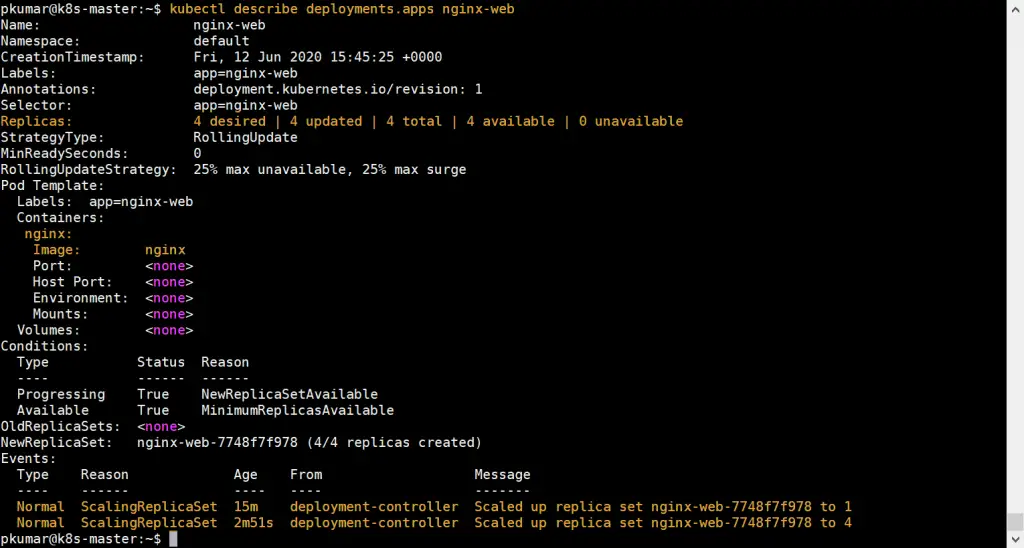
Above confirms that nginx based deployment has been scale up successfully.
Let’s perform one more test, create a pod named “http-web” and expose it via service named “http-service” with port 80 and NodePort as a type.
Run the following command to create a pod,
$ kubectl run http-web --image=httpd --port=80 pod/http-web created $
Create a service using beneath command and expose above created pod on port 80,
$ kubectl expose pod http-web --name=http-service --port=80 --type=NodePort service/http-service exposed $ $ kubectl get service http-service NAME TYPE CLUSTER-IP EXTERNAL-IP PORT(S) AGE http-service NodePort 10.101.152.138 <none> 80:31098/TCP 10s $
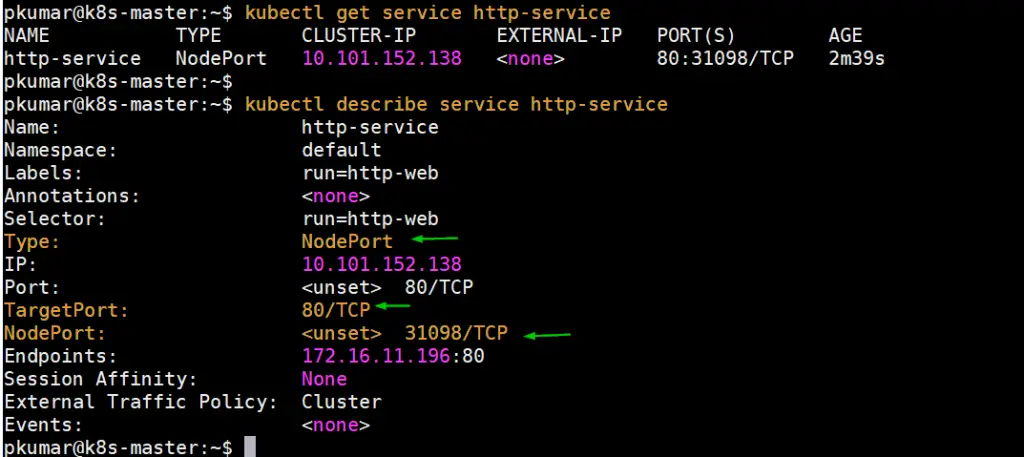
Get the Node IP or hostname on which http-web pod is deployed and then access webserver via NodePort (31098)
$ kubectl get pods http-web -o wide NAME READY STATUS RESTARTS AGE IP NODE NOMINATED NODE READINESS GATES http-web 1/1 Running 0 59m 172.16.11.196 k8s-node-0 <none> <none> $ $ curl http://k8s-node-0:31098 <html><body><h1>It works!</h1></body></html> $
Conclusion
Congratulations! You’ve successfully set up a Kubernetes cluster on Ubuntu 20.04. Kubernetes provides a robust foundation for deploying and managing containerized applications, and with your new cluster, you’re ready to explore its full potential.
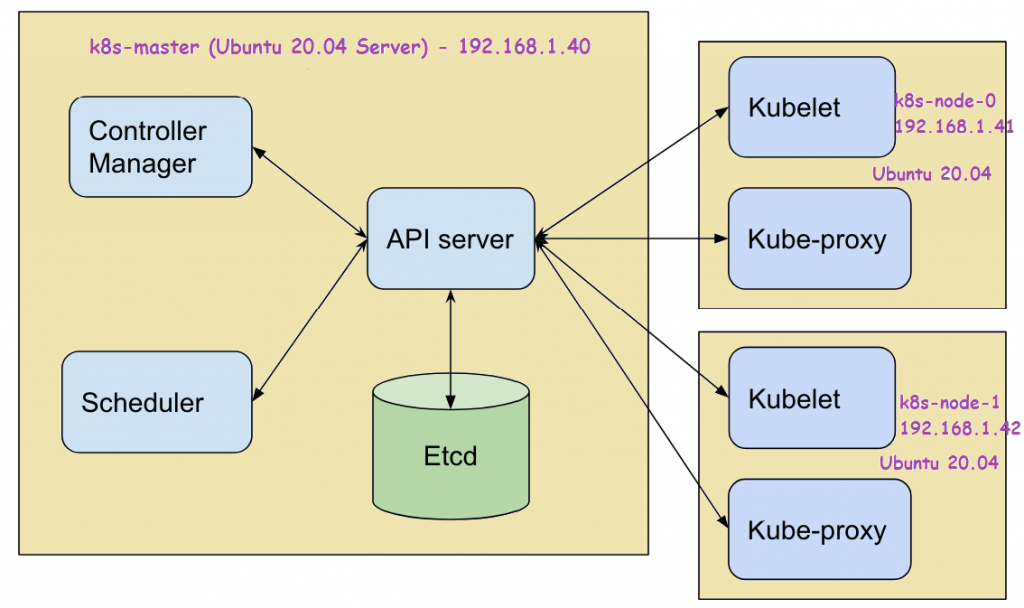

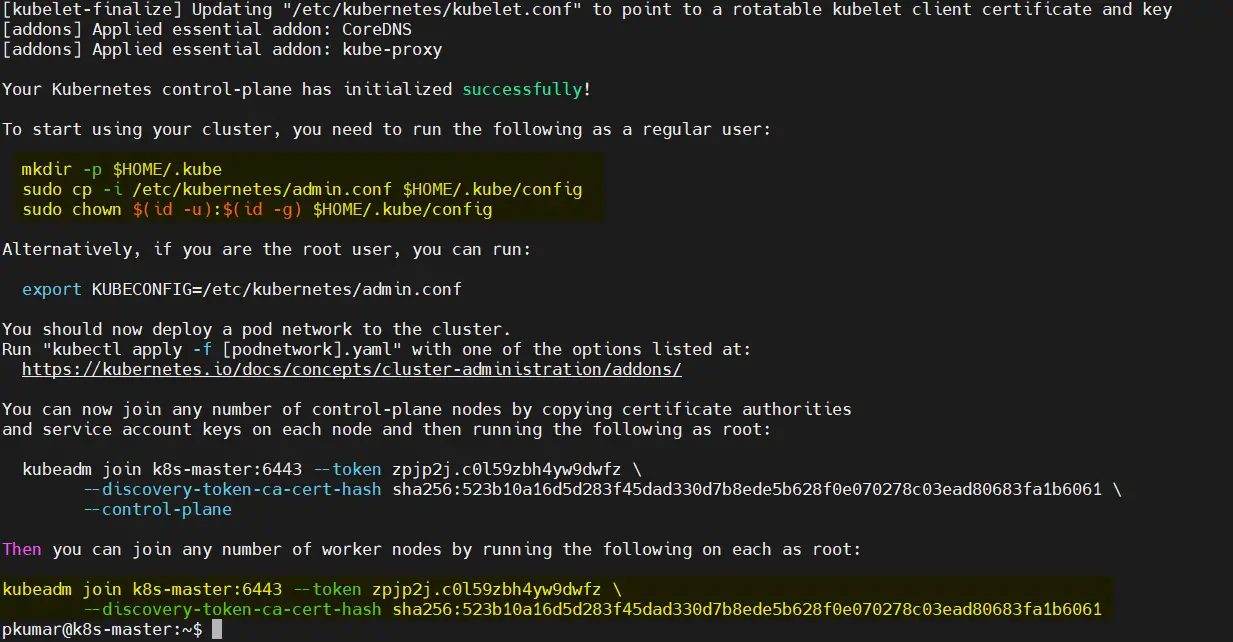


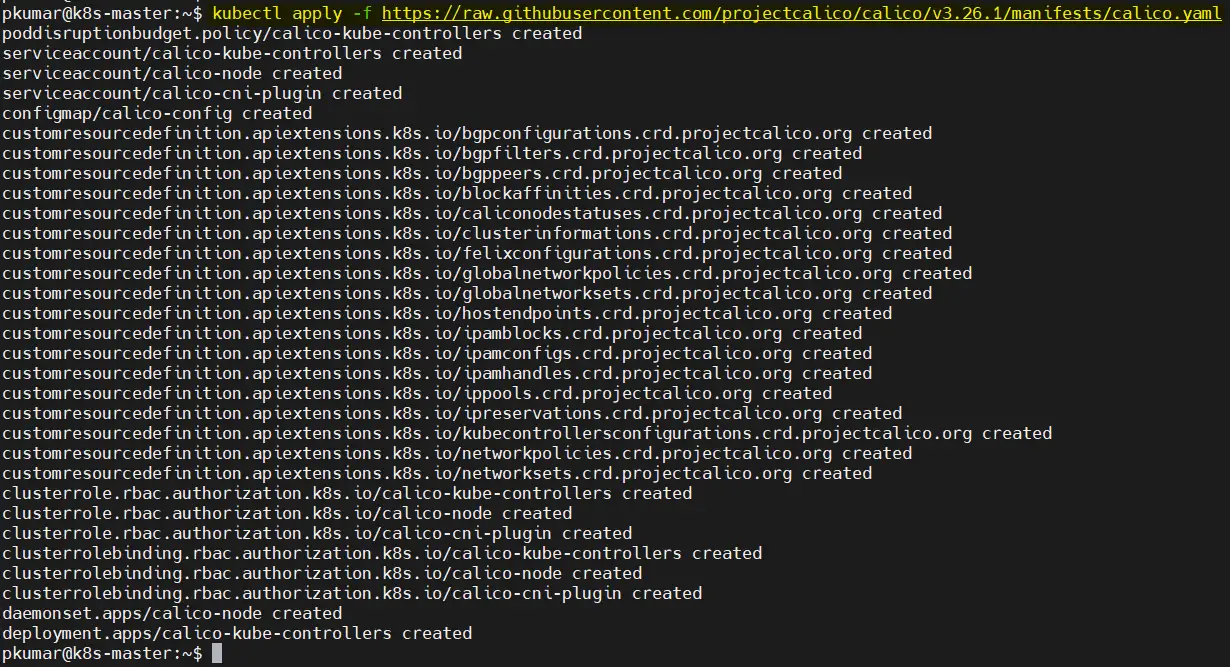
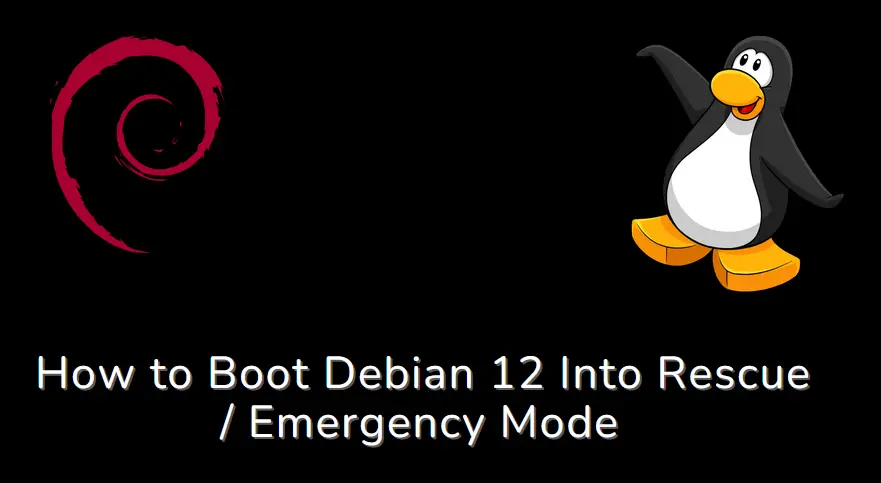
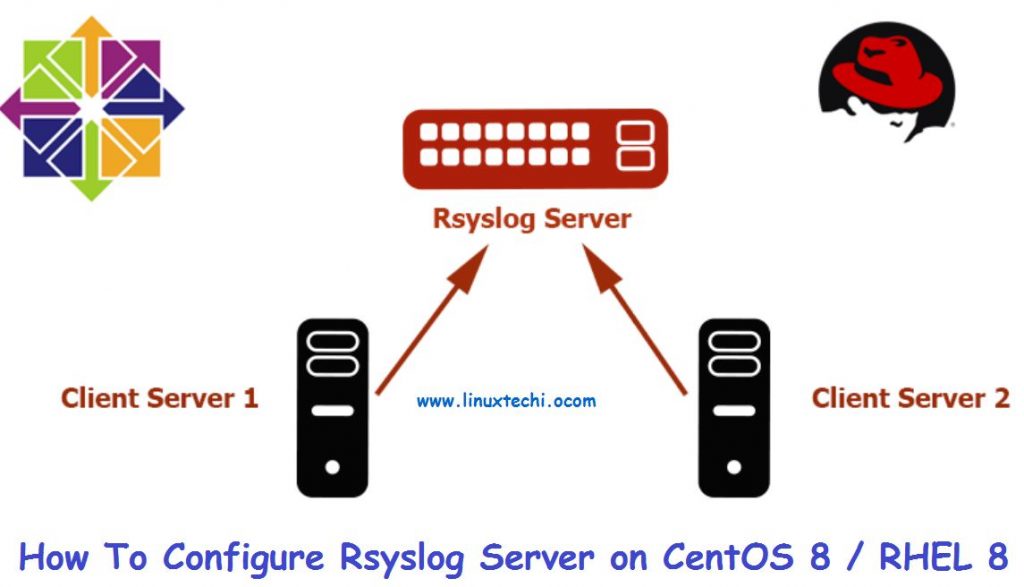

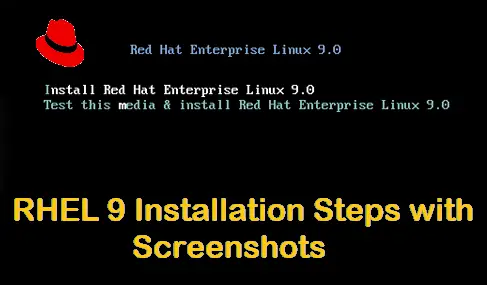
Great article! It works. 🙂 Thank you.
Thanks for the great Guide, i faced some problems but with some research it was no Problem, i gonna describe the problems here for people that maybe face the same onces:
1. Error while ” kubeadm init ”
I have a virtual Server with 1 Core and 2GB of Ram, but K8s wants 2 Cores, my solution beside upgrading
the maschine the other solution was to adding to the Kubeadm init command the following command
“– ignore-preflight-errors=NumCPU”, i don’t now if this can result to problems but its a quick and dirty
solution if you only wants to train/test.
2. Nginx deployment pending
I do not wanted to deploy 2 virtual machine so i deployed the control Panel and the nginx deploment at
one but the pod never faced the light of being a pod, the solution was to permit the Master/Control Panel
to deploy at it self new pods, with the following command:
“kubectl taint nodes –all node- role.kubernetes.io/master-”
This possibility is disabled because of security concerns from kubernetes, at the moment i am
a beginner and i am testing k8s so its no problem for me but if you want to run it at a prod env i would
invest.
I hope that this comment helps some people that face similar problems.
for a another machine.
Thank you very Much, using this, I was able to run a kubernetes cluster
As per my understanding 1) You are using Oracle Virtualbox to create these 3 vms 2) You keep all 3 vm’s in the ‘Bridged’ mode & are on DHCP 3) You did not configure host-only network.
Please let me know if my understanding is wrong. Thank you.
In my case Calico pods are not able to start. I am using Oracle Virtualbox. My Kubernetes vm’s are in Bridged network mode. In 1st attempt, when calico pod was getting configured my connectivity to the master vm lost. I had to reboot the vm.
you can manually set the a static ip beyond your router’s dhcp range (check your router setting) for each vm.
so restart wont affect the lan ip address.
great article, thanks!
while kubectl apply calico it says
Warning: apiextensions.k8s.io/v1beta1 CustomResourceDefinition is deprecated in v1.16+, unavailable in v1.22+; use apiextensions.k8s.io/v1 CustomResourceDefinition
Perhaps there’s another version? I didn’t want to mess it up all, so I applied the current configuration and it works really well until now, I’ll continue the tuto, thanks so much!
you can download the yaml file to your local, and then make the suggested edits from the warning.
and then use kubectl to apply the file.
A simple and great guide. Many thanks!
Thank You, Good Guide
Thanks Pradeep. I had issues with my network and IP addresses but eventually I managed to resolve all the issues along with your other instructions.
Thanks! It works!